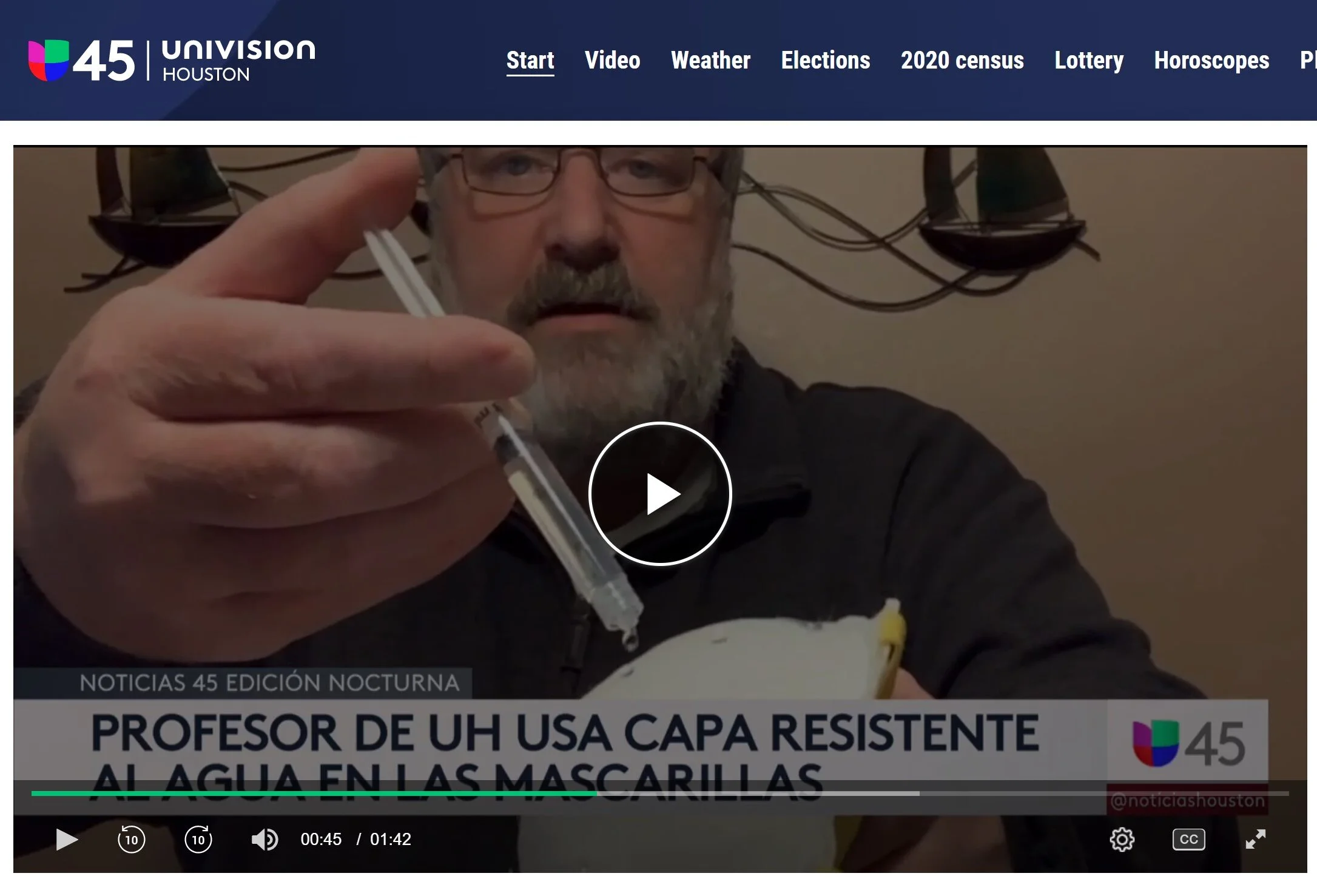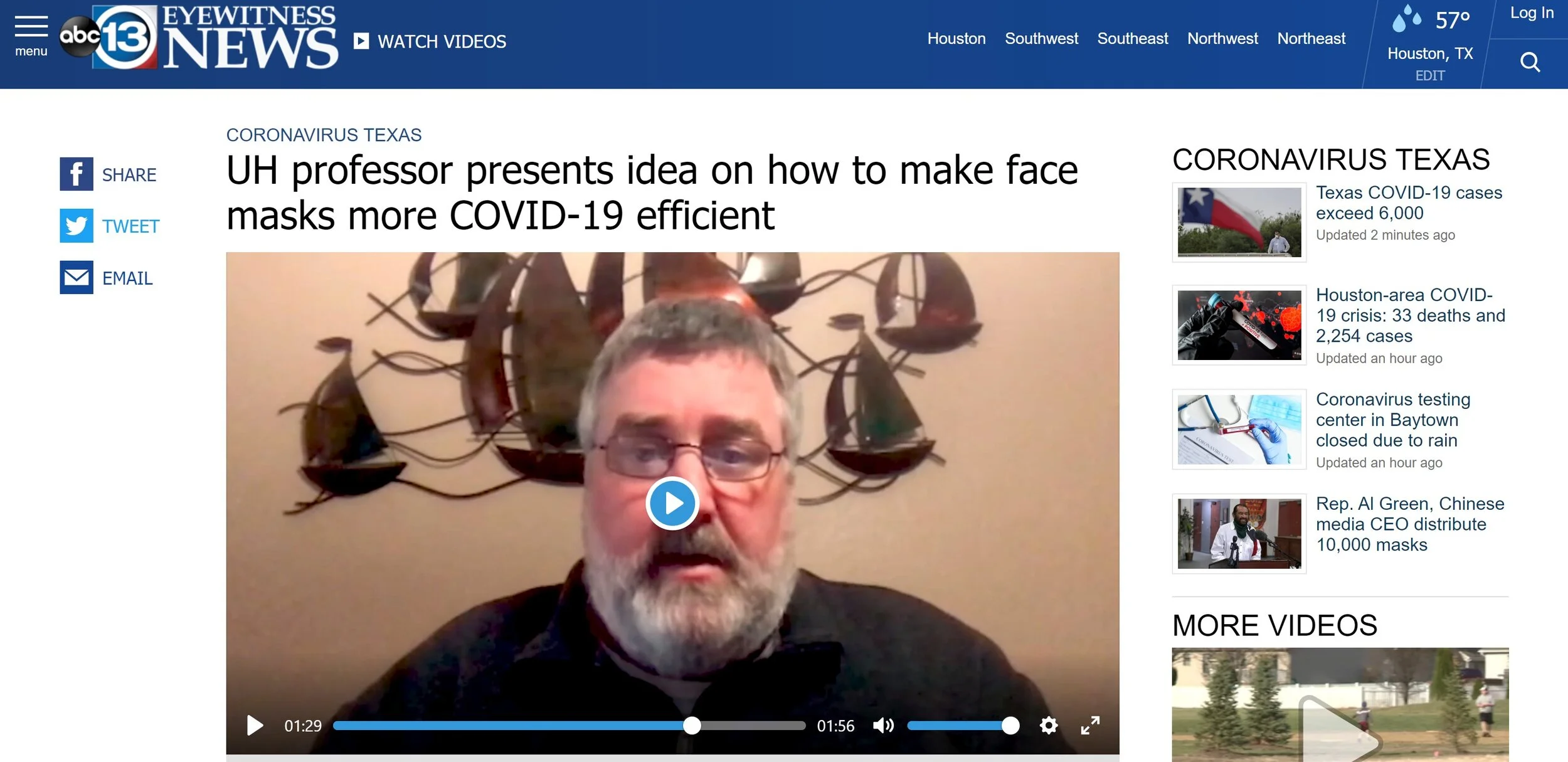InnovationMap has shared Three Houston Innovators to know this week which includes Integricote CEO, Prof. Shay Curran.
Across industries, Houston innovation leaders, entrepreneurs, and innovators are coming up with creative solutions for the coronavirus or its subsequent challenges — from digital resources to reliable face masks.
Water beading (green food color added for demo) on an ordinary mask coated with Integricote Premium Hydrophobic Coating (right) and uncoated mask (left)
Seamus Curran is well-known for his work commercializing nanotechnologies, and he is pulling from his past to deal with a future demand. The professor is using a hydrophobic coating he developed nearly 10 years ago to improve the ability of surgical masks to protect against transmission of the virus.
The world is in dire need of more face masks, and Curran notes that standard masks are "somewhat porous, and especially if they get wet, they can allow the virus to penetrate." People infected with the virus, he adds, could spread it even through a mask, while people who aren't sick could still become infected, despite wearing a less-protective mask.
Curran is hoping his solution can prove to be much more effective at preventing the spread of the disease. Click here to continue reading.



















